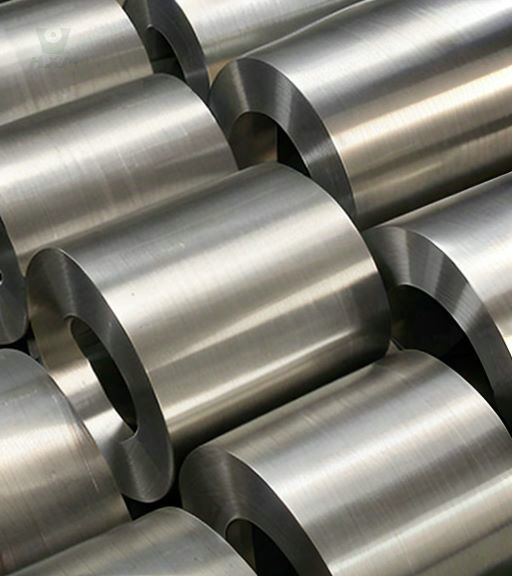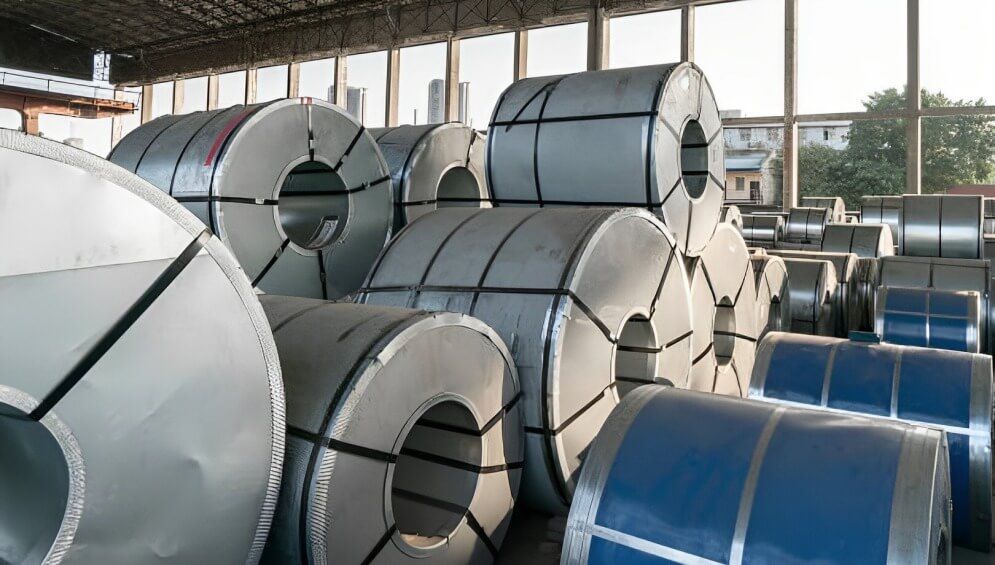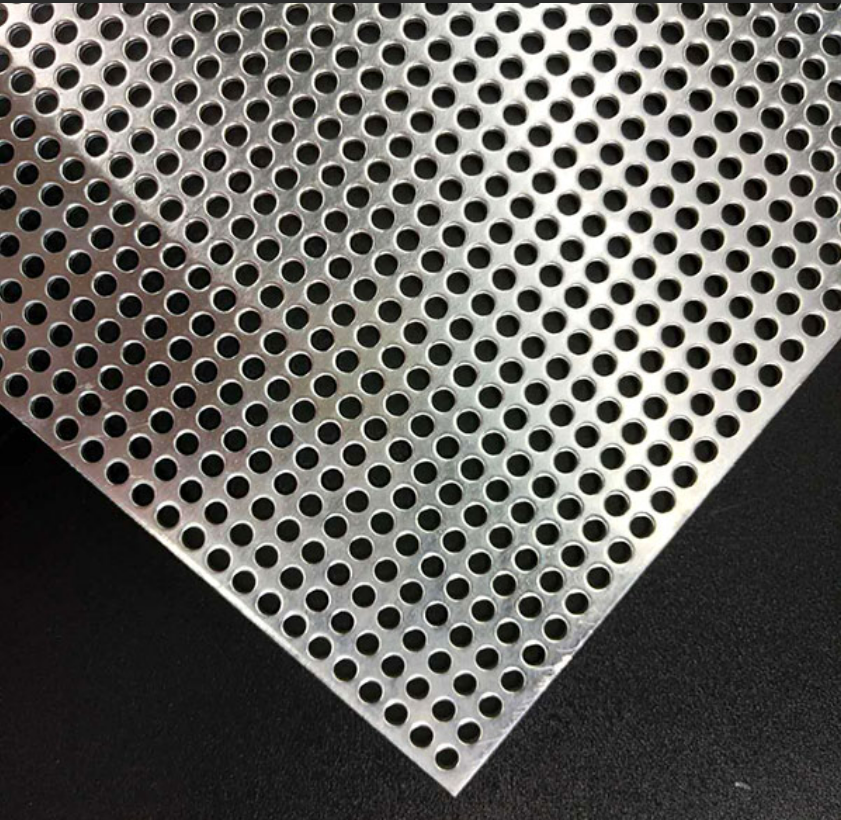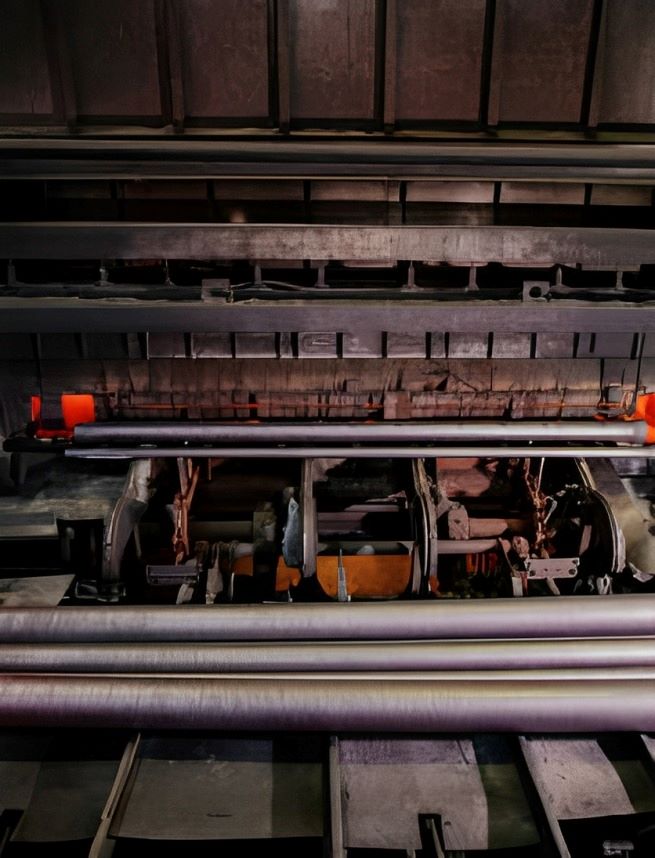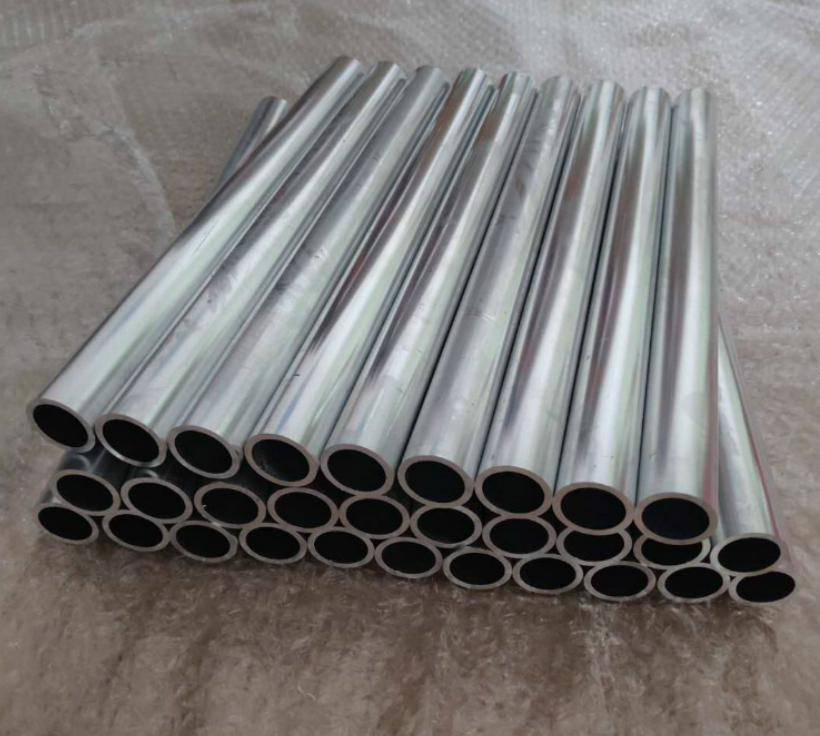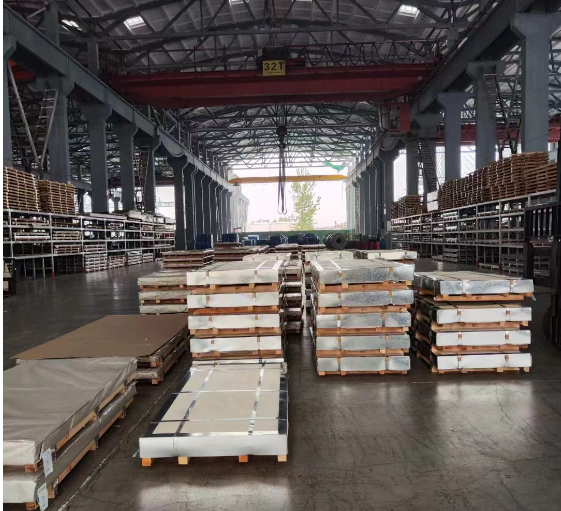
-Huaxiao Stainless Steel Suppliers
Can You
Anodize Stainless Steel?
Are you looking to add a touch of color and enhanced durability to your stainless steel products? Perhaps you’ve heard about anodizing, a popular surface treatment technique widely used in the metal industry. But wait a minute—can you anodize stainless steel? It may seem like a contradictory concept since stainless steel is already known for its corrosion-resistant properties. In this blog post, we’ll delve into the fascinating world of anodizing stainless steel and explore whether this process can truly unlock new possibilities for this remarkable material. So, fasten your seatbelts as we embark on a journey to uncover the untapped potential of anodizing stainless steel.
Table of Contents
-Huaxiao Stainless Steel Suppliers
Can You Anodize Stainless Steel?
Stainless steel, known for its remarkable resistance to corrosion and oxidation, appears to be an unlikely candidate for the anodization process. Anodizing primarily involves enhancing the protective oxide layer on metals like aluminum by immersing them in an electrolytic bath. This process promotes the formation of a thicker, more robust oxide layer that can be dyed for aesthetic or functional purposes.
Stainless steel, however, already possesses a natural oxide layer, mainly consisting of chromium oxide, which provides its corrosion resistance. This inherent layer seems to negate the need for anodization, raising the initial doubt about its feasibility.
Nonetheless, it is possible to anodize stainless steel, but the approach is distinct from that used with aluminum. In this unique method, an electrolyte bath containing phosphoric and sulfuric acids is employed, and the stainless steel acts as the anode. Through controlled electrical current and the precise selection of operating parameters, a controlled layer of oxide can be formed on the stainless steel surface. This specialized process enhances the natural oxide layer, providing benefits such as improved color options, increased corrosion resistance, and even the potential for antibacterial properties.
what is Anodization?
-Huaxiao Stainless Steel Suppliers
The anodization process is a scientifically grounded method employed to enhance the properties of metals, primarily aluminum, though it can also be adapted for stainless steel. This process involves the controlled formation of an oxide layer on the metal’s surface through an electrochemical procedure. Let’s delve into the scientific intricacies of anodization:
- Electrolyte Bath Composition: Anodization begins with the selection of an appropriate electrolyte bath. The choice of electrolyte is based on scientific principles that ensure its compatibility with the specific metal being anodized. In the case of anodizing stainless steel, a specialized electrolyte bath, often containing phosphoric and sulfuric acids, is employed. This bath is meticulously designed to create the desired reaction with the stainless steel surface.
- Electrochemical Process: The metal to be anodized, in this case, stainless steel, serves as the anode (positive electrode) in an electrolytic cell. The scientifically controlled application of electrical current drives the anodization process. Electrons are released from the metal's surface, and oxygen from the electrolyte bath combines with the metal to create the oxide layer. The science behind this electrochemical reaction ensures that the layer's growth is precise and controlled.
- Oxide Layer Formation: As the anodization process proceeds, an oxide layer begins to form on the stainless steel's surface. This layer primarily consists of chromium oxide, which is the key contributor to stainless steel's natural corrosion resistance. The scientific precision applied in anodization ensures the controlled thickness and density of this oxide layer.
- Enhanced Properties: The scientific foundation of anodization lies in its ability to enhance the material's properties. In the case of stainless steel, anodization serves to augment the existing chromium oxide layer, making it thicker and more resilient. This results in improved corrosion resistance and opens the door to a range of other functional and aesthetic benefits.
- Tailored Approach: The success of anodization depends on scientific knowledge and a tailored approach to match the specific characteristics of stainless steel. Stainless steel suppliers, with their expertise, play a vital role in guiding the scientific selection of the right materials and parameters for the anodization process.
In summary, the anodization process is a scientifically intricate method that can be adapted to enhance the properties of stainless steel, particularly its corrosion resistance. The process’s success hinges on an understanding of the metal’s unique properties, the precise composition of the electrolyte bath, and the controlled electrochemical reactions that result in the formation of an optimized oxide layer. Stainless steel suppliers’ scientific insights are instrumental in ensuring the success of anodization, expanding the possibilities for this versatile material.
How Anodization Enhances the Protective Oxide Layer?
The process of anodization serves as a scientific method to augment and fortify the protective oxide layer on metals like stainless steel. It enhances the inherent corrosion resistance of stainless steel, offering a deeper understanding of the scientific principles behind this enhancement. Let’s explore how anodization achieves this feat:
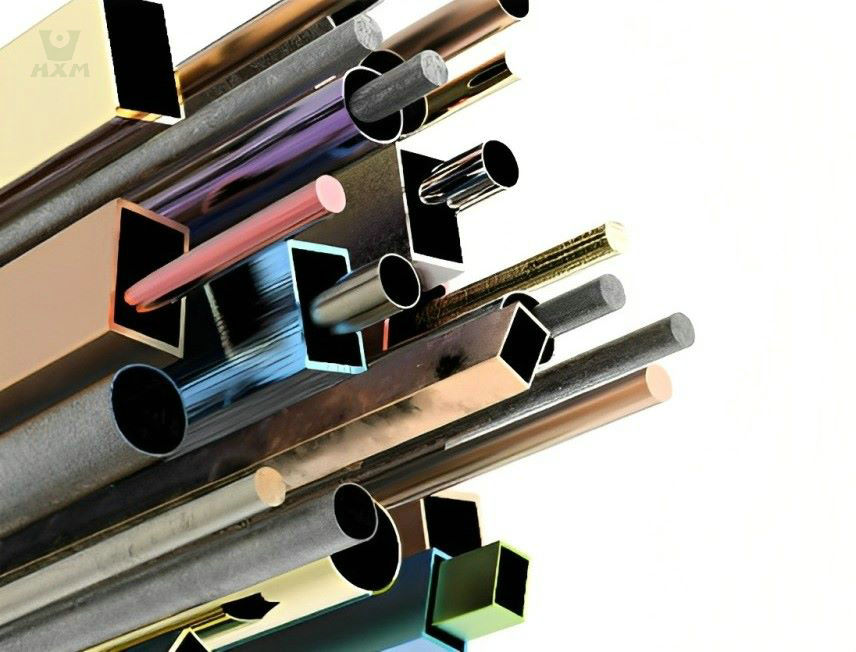
-Huaxiao Stainless Steel Suppliers
Anodization allows for a controlled growth of the oxide layer on the stainless steel’s surface. This controlled growth is scientifically calibrated through the precise application of electrical current in the electrolyte bath. The result is an oxide layer that is thicker and denser than the naturally occurring layer on stainless steel.
The primary scientific outcome of anodization is the formation of a thicker and more resilient oxide layer. This enhanced layer serves as an additional protective barrier, reinforcing the inherent corrosion resistance of stainless steel. The controlled growth ensures that the layer is uniform and free from imperfections.
Anodization’s impact on the protective oxide layer translates to heightened corrosion resistance. The scientific basis lies in the ability of the thicker oxide layer to act as a more robust shield against environmental factors such as moisture, chemicals, and oxidation. This is particularly valuable in applications where stainless steel is exposed to aggressive conditions.
The scientific principles of anodization contribute to the overall durability of the stainless steel surface. The thicker oxide layer is more resistant to wear and tear, extending the material’s lifespan in various applications. This scientific enhancement results in long-term cost savings and improved performance.
Stainless steel suppliers play a pivotal role in ensuring that anodization adheres to industry standards. Their scientific expertise helps in selecting the appropriate stainless steel grades and optimizing the anodization process for specific applications. This collaboration ensures that the scientific nuances of anodization are harnessed effectively.
In conclusion, the process of anodization significantly enhances the protective oxide layer on stainless steel through controlled growth, resulting in a thicker and more resilient layer. This scientific transformation provides superior corrosion resistance, improved durability, and adherence to industry standards. The combination of precise parameters and scientific understanding ensures that anodized stainless steel is well-suited for applications across various industries.
Typical Metals Anodized and Their Properties
Anodization is a widely recognized process for enhancing the properties of various metals. While aluminum is the primary metal associated with anodization, the scientific principles governing this process extend to other materials. Let’s examine typical metals anodized, such as aluminum, and the unique properties they exhibit:
- Aluminum Anodization: Aluminum anodization is perhaps the most well-known and extensively studied form of anodization. The scientific basis for this process revolves around the controlled growth of an oxide layer on the aluminum's surface. The oxide layer, primarily composed of aluminum oxide, enhances the metal's corrosion resistance, durability, and adhesion properties. It also provides a porous surface that can be dyed for various aesthetic and functional purposes.
- Titanium Anodization: Titanium, another metal often subjected to anodization, exhibits remarkable corrosion resistance and a high strength-to-weight ratio. The scientific principles of anodization for titanium involve controlling the thickness and morphology of the oxide layer. The resulting titanium oxide layer enhances biocompatibility, making it invaluable in medical implants and aerospace applications.
- Magnesium Anodization: Anodizing magnesium involves the creation of a protective magnesium oxide layer. The scientific principles underpinning this process focus on optimizing the thickness and surface texture of the oxide layer. Magnesium's lightweight properties, coupled with improved corrosion resistance through anodization, render it suitable for automotive and aerospace components.
- Zinc Anodization: Anodizing zinc aims to improve the material's corrosion resistance and adhesion properties. The scientific approach involves carefully controlling the thickness and properties of the zinc oxide layer. This layer enhances zinc's utility in galvanized steel, where it serves as a sacrificial protective layer.
- Stainless Steel Anodization: Though not as commonly anodized as aluminum, stainless steel anodization is a specialized process. The scientific approach here entails creating a thicker, more robust oxide layer on the stainless steel surface. This enhances its corrosion resistance and durability, while also allowing for expanded color options and potential antibacterial properties. Stainless steel suppliers provide valuable scientific guidance in this tailored anodization process.
In summary, various metals, including aluminum, titanium, magnesium, zinc, and even stainless steel, can undergo anodization. The scientific principles of anodization vary depending on the specific metal, with each process tailored to optimize properties such as corrosion resistance, biocompatibility, lightweight characteristics, and adhesion. The adaptability of anodization ensures that a wide range of industries can harness these scientific principles to enhance material performance and applications.
In summary, various metals, including aluminum, titanium, magnesium, zinc, and even stainless steel, can undergo anodization. The scientific principles of anodization vary depending on the specific metal, with each process tailored to optimize properties such as corrosion resistance, biocompatibility, lightweight characteristics, and adhesion. The adaptability of anodization ensures that a wide range of industries can harness these scientific principles to enhance material performance and applications.
Challenges of Anodizing Stainless Steel
Anodizing stainless steel presents a unique set of challenges due to the material’s inherent properties. These challenges stem from the natural chromium oxide layer in stainless steel and the unsuitability of traditional anodization techniques.
The Natural Chromium Oxide Layer
Stainless steel’s corrosion resistance is primarily attributed to its naturally occurring chromium oxide layer. This layer forms spontaneously when the metal is exposed to oxygen and moisture, creating a passive and protective barrier against corrosion. The scientific challenge arises from the need to preserve this natural layer while anodizing. Traditional anodization methods for other metals involve dissolving the existing oxide layer to create a new one. However, in the case of stainless steel, it is essential to avoid dissolving the beneficial chromium oxide layer, necessitating a specialized approach.
Unsuitability of Traditional Techniques
Traditional anodization techniques, as employed in metals like aluminum, are unsuitable for stainless steel due to its unique composition. These methods involve the dissolution and growth of a new oxide layer, a process that is at odds with the preservation of the existing chromium oxide layer. The scientific challenge lies in adapting anodization processes to address this fundamental difference. This requires the development of specialized methods, including the selection of specific electrolyte compositions and precise control of electrochemical parameters, to facilitate anodization without compromising the stainless steel’s innate corrosion resistance.
In conclusion, the challenges of anodizing stainless steel are rooted in the need to work with, rather than against, the material’s natural chromium oxide layer. These scientific challenges necessitate the development of specialized anodization techniques and a close collaboration with stainless steel suppliers. By understanding the unique properties of stainless steel and applying scientific principles, the challenges can be met, unlocking the potential for enhancing the material’s corrosion resistance and aesthetics through anodization.
Aluminum vs. Stainless steel: Which is better hard-anodized
ALUMINIUM
Hard-anodized aluminum boasts exceptional corrosion resistance, durability, and light weight. Its high strength-to-weight ratio makes it a preferred material in the aerospace, automotive, and marine industries. Additionally, it can be effortlessly painted or powder-coated to further enhance its corrosion resistance.
STAINLESS STEEL
On the other hand, hard-anodized stainless steel is renowned for its hardness, ease of cleaning, and corrosion resistance. It finds extensive use in food processing, medical equipment, and household appliances. Stainless steel can be polished or brushed, with a chrome finish restoring its luster.
Process To Anodize Stainless Steel
The anodizing process for stainless steel involves several steps to achieve the desired results. Here is a detailed explanation of the anodizing process:
- Surface Preparation: Before anodizing, the stainless steel surface needs to be thoroughly cleaned and prepared. This typically involves degreasing the surface to remove any oils, dirt, or contaminants that may hinder the anodizing process.
- Electrolyte Bath Preparation: An electrolyte bath is prepared, which is a solution containing chemicals and additives specific to the anodizing process. The composition of the electrolyte bath may vary depending on the desired outcome, such as color or corrosion resistance.
- Immersion in the Electrolyte Bath: The stainless steel object is immersed in the electrolyte bath, and an electric current is applied. The object serves as the anode, and a separate cathode is also placed in the bath.
- Formation of Oxide Layer: As the electric current passes through the electrolyte bath, an oxidation reaction occurs at the surface of the stainless steel. Oxygen ions combine with the metal to form a controlled and uniform layer of oxide.
- Electrolyte Reaction: The electrolyte bath facilitates the formation of the oxide layer by providing a suitable environment for the electrochemical reaction. The composition of the electrolyte bath and the applied current determine the thickness and properties of the resulting oxide layer.
- Coloring (Optional): If desired, the anodized stainless steel can be further enhanced with color. This is achieved by introducing dyes or pigments into the electrolyte bath. The oxide layer absorbs the color, resulting in a wide range of vibrant and durable finishes.
- Sealing: Once the anodizing process is complete, the stainless steel object may undergo a sealing step. Sealing helps to improve the corrosion resistance and durability of the oxide layer by closing any remaining pores. This is typically done by immersing the anodized stainless steel in a sealing solution or applying a sealant coating.
The anodize stainless steel process offers numerous benefits, including increased corrosion resistance, improved aesthetics, and enhanced durability. It finds applications in various industries, such as architecture, automotive, electronics, and more. By following the proper steps and working with experienced stainless steel suppliers, you can achieve high-quality anodized stainless steel products with the desired properties and finishes.
The Scientific Solution
Anodize stainless steel necessitates a specialized method that carefully considers the material’s unique properties and the need to preserve its natural oxide layer. This scientific solution entails the following components:
Specialized Method of Anodizing Stainless Steel
Anodize stainless steel involves a unique and specialized method, distinct from the conventional anodization processes employed on metals like aluminum. This specialized method is grounded in precise scientific principles and takes into consideration the distinctive properties of stainless steel. Here’s a detailed scientific overview:
Preservation of the Natural Oxide Layer
The specialized method of anodize stainless steel prioritizes the preservation of the metal’s natural oxide layer, primarily composed of chromium oxide. This layer is the cornerstone of stainless steel’s corrosion resistance. The scientific approach centers on ensuring that anodization does not dissolve this beneficial layer, in contrast to traditional anodization techniques applied to other metals.
Electrochemical Parameters
The specialized method demands meticulous control over the electrochemical parameters of the anodization process. This includes carefully regulating factors such as voltage, current density, and temperature. The scientific calibration of these parameters ensures that the anodization proceeds without jeopardizing the existing oxide layer while achieving the desired improvements in stainless steel’s properties.
Controlled Oxide Layer Growth
An essential aspect of the specialized method is the controlled growth of the oxide layer. Instead of dissolving and recreating the oxide layer, as done in traditional anodization, this process focuses on incrementally building upon the existing layer. Scientifically, this precise control ensures the growth of a uniform and thickened oxide layer, augmenting the stainless steel’s corrosion resistance and other properties.
Optimized Anodization Bath
The electrolyte bath composition plays a crucial role in anodize stainless steel. The scientific formulation of this bath involves specific combinations, often including phosphoric and sulfuric acids, tailored to interact with stainless steel while preserving its chromium oxide layer. The specialized bath formulation supports the controlled growth of the new oxide layer.
Stainless steel suppliers bring invaluable scientific expertise to the anodization process. They offer guidance in selecting the right stainless steel grades and optimizing the anodization procedure. Their deep knowledge ensures that the scientific nuances of the specialized method are applied effectively, resulting in the desired properties and corrosion resistance improvements.
In conclusion, the specialized method of anodizing stainless steel is a precision-driven scientific approach that respects the unique composition of stainless steel. It emphasizes preserving the natural oxide layer, achieving controlled oxide layer growth, and ensuring meticulous control over electrochemical parameters. The formulation of the electrolyte bath, underpinned by scientific principles, complements this specialized method. Collaborative efforts with stainless steel suppliers, who provide invaluable scientific insights, are pivotal in executing the specialized method successfully and expanding the utility of anodized stainless steel across various industries.
Electrolyte bath composition
The composition of the electrolyte bath is a critical component of the anodization process when working with stainless steel. It is a scientifically formulated solution designed to facilitate the controlled growth of the oxide layer on the stainless steel’s surface. The electrolyte bath composition is key to the success of anodize stainless steel, and it revolves around specific principles:
- Preserving the Natural Oxide Layer: The scientific formulation of the electrolyte bath is fundamental to preserving the natural oxide layer of stainless steel. Unlike other metals subjected to anodization, stainless steel's natural oxide layer, primarily composed of chromium oxide, is an essential part of its corrosion resistance. The electrolyte bath's composition is precisely tailored to ensure it interacts with the stainless steel surface without dissolving this valuable layer. Scientifically, this is a delicate balance to maintain.
- Facilitating Controlled Oxide Growth: The composition of the electrolyte bath must facilitate the controlled growth of the oxide layer. In the specialized anodization method for stainless steel, the bath's composition is engineered to encourage the electrochemical reactions that promote the growth of the new oxide layer, enhancing the material's corrosion resistance. This process involves a scientific calibration to ensure that the growth is uniform and adheres to precise thickness specifications.
- Tailored for Stainless Steel's Properties: The electrolyte bath composition is specifically adapted to the unique properties of stainless steel. It is essential that the formulation allows for the controlled growth of the oxide layer while not interfering with the stainless steel's inherent corrosion resistance and other characteristics. Scientifically, this requires a deep understanding of stainless steel's properties and the development of a bath that complements them.
In conclusion, the composition of the electrolyte bath in anodize stainless steel is a scientifically precise formulation designed to preserve the natural oxide layer, facilitate controlled oxide growth, and adapt to stainless steel’s unique properties. The scientific principles behind this composition are crucial for achieving the desired results in terms of corrosion resistance and other enhanced properties while expanding the utility of anodized stainless steel. Collaborative efforts with stainless steel suppliers, who provide scientific guidance, are pivotal in ensuring the electrolyte bath composition aligns with the specific requirements of each application.
Controlling the Electrical Current
The precise control of electrical current is a fundamental aspect of the anodization process when working with stainless steel. This control is essential for achieving the desired results while preserving the natural oxide layer of stainless steel. Let’s explore the scientific intricacies of controlling the electrical current in anodize stainless steel:
- Scientific Basis of Current Control: Controlling the electrical current during anodization is of paramount importance. The scientific basis lies in achieving precise and controlled growth of the oxide layer. In traditional anodization techniques, metals like aluminum undergo a dissolution of the existing oxide layer followed by its regeneration through the controlled application of electrical current. However, in the case of stainless steel, the focus is on incrementally building the oxide layer while maintaining the natural layer. Scientifically, this necessitates exact control of current.
- Voltage and Current Density: The scientific calibration of voltage and current density is a critical aspect of controlling the electrical current. The voltage applied to the stainless steel surface must be meticulously adjusted to ensure that the growth of the oxide layer adheres to the specified parameters. Current density, a measure of current per unit area, is equally important in achieving uniform growth. Scientifically, these adjustments require an understanding of the material's properties and the desired thickness of the oxide layer.
- Preventing Dissolution of the Natural Oxide Layer: One of the key challenges in controlling the electrical current is to prevent the dissolution of the natural oxide layer of stainless steel. Scientifically, this requires a fine balance between applying enough current to facilitate the growth of the new oxide layer and avoiding the detrimental removal of the existing layer. The controlled current application ensures that the natural layer remains intact while achieving the desired enhancement.
- Adapting to Stainless Steel's Properties: Controlling the electrical current is a scientifically adaptive process that takes into account the unique properties of stainless steel. The voltage and current density settings are tailored to the material's corrosion resistance, surface characteristics, and specific requirements for different applications. Scientific expertise is vital to ensure that the electrical current aligns with stainless steel's properties.
In conclusion, the scientific control of electrical current in anodize stainless steel is a meticulous process that aims to achieve controlled growth of the oxide layer while preserving the natural layer. The scientific principles involve precise adjustments of voltage and current density, ensuring that the existing oxide layer remains intact. This process is adaptive, taking into account the specific properties of stainless steel for each application. Collaborative efforts with stainless steel suppliers, who provide scientific guidance, play a crucial role in ensuring that the electrical current aligns with the material’s unique characteristics and application requirements.
Conclusion
In the world of materials science and innovation, anodize stainless steel has emerged as a remarkable scientific endeavor. It encompasses a precision-based method, deeply rooted in scientific principles, aimed at enhancing the material’s properties without compromising its inherent corrosion resistance. As we conclude this exploration, it becomes evident that anodize stainless steel holds substantial promise and potential implications for various industries.
The scientific journey into anodize stainless steel reaffirms its feasibility. While stainless steel boasts a natural oxide layer that endows it with corrosion resistance, anodization offers a method to further fortify and refine its properties. The specialized approach, preserving the natural oxide layer while building upon it, showcases the feasibility of enhancing stainless steel without sacrificing its inherent strengths.
Central to the success of anodizing stainless steel is the scientific understanding and precise adjustment of parameters. This includes controlling electrical current, formulating electrolyte bath compositions, and adapting to the unique characteristics of stainless steel. Scientific insights guide the calibration of these factors, ensuring that the anodization process is executed with a keen understanding of the material’s intricacies.
The implications of anodize stainless steel resonate across diverse industries. By enhancing the material’s corrosion resistance, durability, and aesthetics, it opens doors to applications in aerospace, medical devices, architectural design, and more. The scientific-driven approach to anodization also extends to the innovation frontier, where materials science continually seeks ways to optimize existing materials for novel applications.
As we embrace the scientific promise of anodize stainless steel, collaboration with stainless steel suppliers becomes paramount. Their expertise in material properties and anodization processes is integral to harnessing the full potential of this precision-based method.
In a world driven by innovation and the pursuit of advanced materials, anodize stainless steel exemplifies the harmonious blend of science and practicality. Its scientific foundations allow us to improve a material already prized for its exceptional characteristics, underlining the enduring importance of the scientific method in shaping the materials of tomorrow.
-Huaxiao Stainless Steel Suppliers


